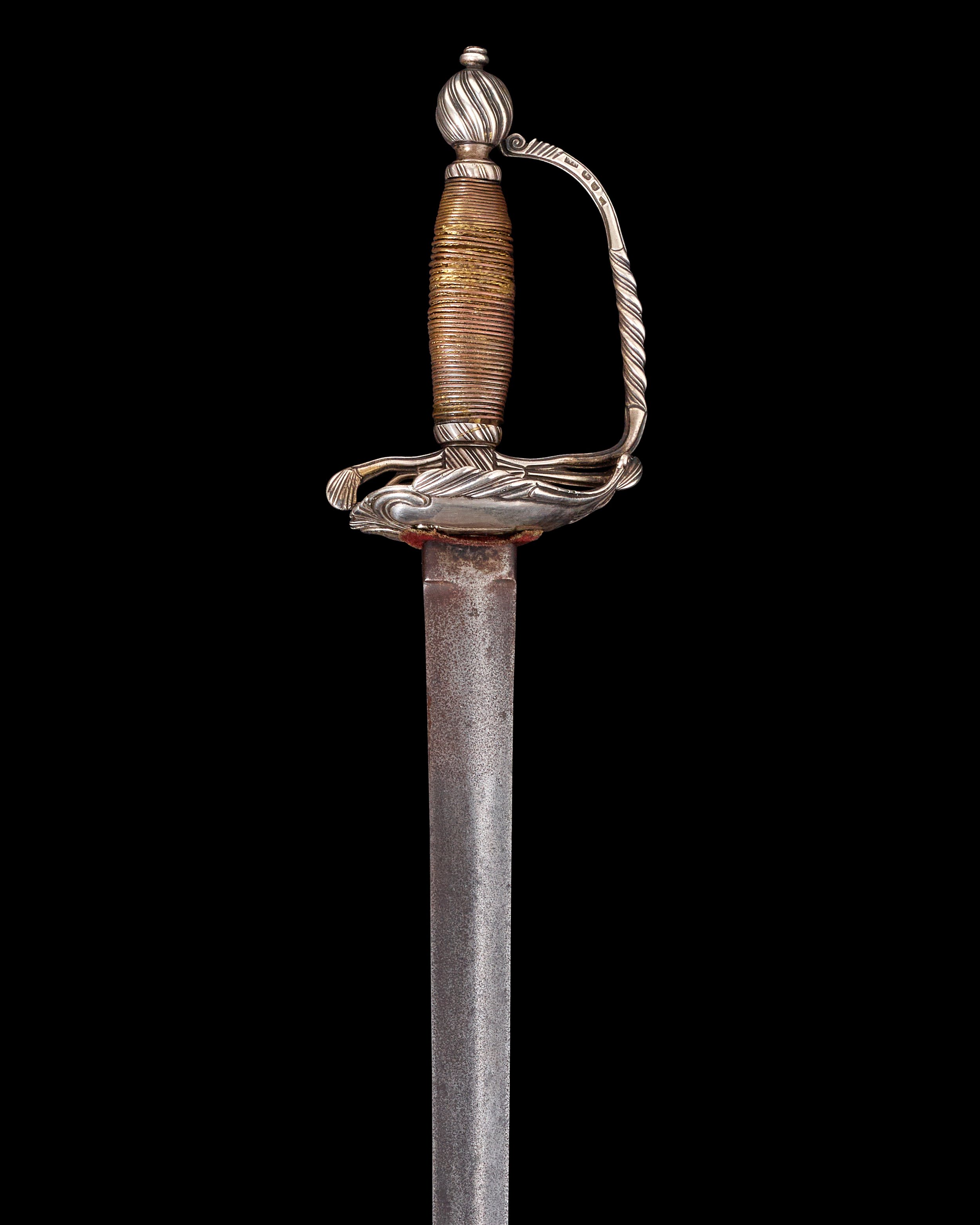 Image 1 of 5
Image 1 of 5

 Image 2 of 5
Image 2 of 5

 Image 3 of 5
Image 3 of 5

 Image 4 of 5
Image 4 of 5

 Image 5 of 5
Image 5 of 5






18th Century Shearing Sword
A silver-hilted British Shearing sword, London 1761. With a tapering double-edged blade, silver hilt cast and chased with writhen designs, comprising boat-shell guard, a pair of quillons with scalloped terminals, knuckle-guard struck with marks (rubbed), and spirally-moulded ovoid pommel, and the grip bound with plaited copper alloy wire and ribband between silver collars, 74.7 cm blade
The handle is marked for William Kinman, (a raised 'WK' within a shaped cartouche). He was a prominent London silver hilt maker and leading member of the Founders Company of which he was elected Master in 1780
The shearing sword was popularised by fencing masters William Hope and Donald Mcbane as a cut and thrust blade, but with out the weight commonly found in the backsword. Only around for a short period, the however had a long service life, before eventually being replaced by the single edged spadroon
A silver-hilted British Shearing sword, London 1761. With a tapering double-edged blade, silver hilt cast and chased with writhen designs, comprising boat-shell guard, a pair of quillons with scalloped terminals, knuckle-guard struck with marks (rubbed), and spirally-moulded ovoid pommel, and the grip bound with plaited copper alloy wire and ribband between silver collars, 74.7 cm blade
The handle is marked for William Kinman, (a raised 'WK' within a shaped cartouche). He was a prominent London silver hilt maker and leading member of the Founders Company of which he was elected Master in 1780
The shearing sword was popularised by fencing masters William Hope and Donald Mcbane as a cut and thrust blade, but with out the weight commonly found in the backsword. Only around for a short period, the however had a long service life, before eventually being replaced by the single edged spadroon
